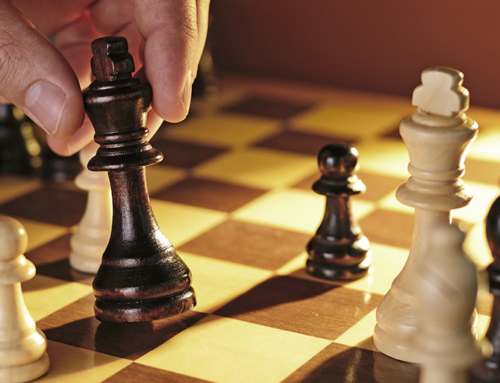Today I share with you a way of thinking about and organizing your approach to making and keeping New Year’s resolutions. First, it’s important to explore why it’s so hard to keep resolutions. The shortest answer is because the state of mind one is in when making resolutions is not the state of mind one is in when those resolutions are to be carried out. There are two main types of resolutions: doing things we do not want to do and not doing things we want to do. With the first type of resolution we face resistance, the urge to avoid doing what was resolved to be done, and craving, the urge to do what was resolved to no longer do.
There is a large gap in subjective experience between the time of the making of the resolution and the time of keeping it. For example, when is a person most likely to resolve to lose weight? Most likely when they’ve just ‘pigged out’ and think, “I’ve got to stop eating like this. I know it’s too much; it makes me feel bloated and uncomfortable, and I’m no longer fitting into my clothes.” Thus, the resolution is made at a time of satiety when the craving for food, or for a particular food, is nonexistent. In such a state of mind, it is exceedingly easy to resolve to not eat cookies and other caloric foods. One is not, at that moment of resolution, in a state of craving which one will be in multiple times a day when carrying out the resolution. One can remind oneself that cravings will arise and that this will challenge one’s ability to keep oneself from eating those yummy cookies, but it is hard to experience the actual craving and the difficulty of resisting eating what is craved.
There is no getting around this difficulty of resistances and cravings – they will arise – but there are ways of strengthening one’s resolve, of trying to counterbalance the power of resistance and craving with the power of a resolution properly made.
How then can one improve the making and keeping of one’s resolutions? There are two main ways that are captured in my tree of life approach. This tree is a metaphor, a way of capturing what needs to be done to give resolutions a fighting chance of success. The tree has three parts, the trunk, the crown, and the roots. The trunk represents our ongoing subjective awareness of the world and the self, the self that moves through life, makes resolutions, experiences urges to do certain things and to avoid doing other things, thinks and feels as various situations arise in living through each day. In short, it is the subjective ‘I.’ The crown represents one’s encounter with one’s transcendent concerns, the goals and motivations one has that transcend any particular moment and may encompass and guide the entirety of one’s life. These transcendent concerns include core life goals and values, ethical and religious commitments, and life philosophies. The roots of the tree represent the self’s encounter with the lived world, with the day-to-day situations one finds oneself going through.
Thus, to both increase the quality of one’s resolutions and strengthen one’s ability to successfully act on them, one should connect them to the crown of transcendent concern and the roots of engaging and acting in the world.
If we use the loss of 10 lbs. as a possible resolution, we can start by asking several questions about how that resolution relates to transcendent concerns. Why 10 lbs.? Why is this important? What core goals, values, or concerns does this amount of weight loss represent and become a manifestation of? Maybe a different goal is behind this initially stated goal. Maybe the resolution to lose 10 lbs. was arrived at because the person feels unattractive, undesirable, lethargic, past one’s prime, or old. That desire to lose 10 lbs. may be addressing a larger and unacknowledged concern. Focusing on this underlying concern can help clarify how best to effectively address that underlying concern. Losing 10 lbs. may be a good and direct way of resolving the perceived problem, but it may be barely relevant. It is good to give oneself the space to think about what is of greatest concern and to discern the most direct way of addressing it. Otherwise, when one soon enough finds oneself craving another cookie or another helping of pasta, one will be better able to resist that craving when there’s a really good reason to do so. Otherwise, in the heat of the craving, a weight of 10 lbs. this way or that, just may not seem very important, not important enough to continue to resist the urges to eat that yummy food.
In addition to tying one’s resolution to lose weight to some transcendent goal or value, it is equally important to tie it to the situations one faces in everyday life. After all, those resistances and cravings will arise, and they will arise strongly and repeatedly. When one makes a resolution, it is important to anticipate when, where, and how these resistances and cravings will arise in order to plan and prepare for them. One should ask oneself a series of questions. For example: When are my cravings the strongest? What alternate behaviors can I undertake until the craving passes or lessens? How can I reward myself for successful denial of craving or overcoming of resistance? If I fail, can I punish myself in some way? How can I diminish access to craved foods so that when a craving arises, I cannot easily succumb to it? For example, if I don’t have cookies and other sweets in the house, I am less likely to eat succumb to my craving and eat them. Or, if I wish to add a new activity, when will I fit it in? Do I have time to spare for this new activity? If not, what other activities am I willing to forego?
In future posts I’m happy to go into more specific details and provide examples. But let me know what else, if anything, you’d like me to cover related to resolutions and efforts to effect positive change in one’s life.
Thanks, and let me know what you think and which topic you would want me to cover.
Dr. Jack
Language Brief
“Between stimulus and response there is a space. In that space is our power to choose our response. In our response lies our growth and our freedom.” — Viktor Frankl
“Nothing is so painful to the human mind as a great and sudden change.” ― Mary Wollstonecraft Shelley
“Not knowing when the dawn will come I open every door.” ― Emily Dickinson
“Divide each difficulty into as many parts as is feasible and necessary to resolve it.” ― René Descartes
“I learn by going where I have to go.” ― Theodore Roethke







Leave A Comment